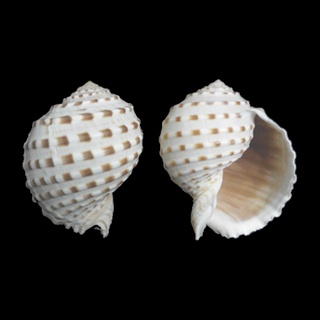Sell Spotted Tun - Hermit crab shell - Craft - Tonna SeaShell - Tonnidae tun shells - SeaShells - Tonna dolium best price
0
ratings
1
sold
SGD 7.9 - SGD 9.9
| Ships from | Singapore |
|---|---|
| Size | S: 60 to 70mm 1pcs M: 70 to 80mm 1pcs |
Product Description
Scientific Name: Tonna dolium (Linnaeus, 1758)
Common Name: Spotted tun
Shell Size: S: 60 to 70mm; M: 70 to 80mm
Opening: S: 40 to 45mm; M: 50 to 56mm
Grade: Commercial
Location: Indo Pacific
Quantity: One (1) shell per pack
Description
- Rather hard shell. Common for Hermit Crab, large sea snail. Collectible, Ornament, good for craft use
Note:
- The pictures are for reference only unless specifically mentioned
- It is important to note all shells are unique and not perfect. It is almost impossible to find 2 identical shells. Like human, shells show signs of aging like scars, growth lines, stress lines and sometimes blemishes and chips.
Hey Hey! Why Seashells
- Valuable, Unique, Gift, Craft, Sailor Valentine, Collectible, Wedding, Educational, Natural history objects, Special meaning
- Collect shells for their amazing shapes and beauty
- Look at their names, where they come from, common or rare
- Classified as natural history objects (same as i.e. fossils or minerals)
- Popular and have special meaning in Feng Shui
- Some uses seashell power for their metaphysical meanings and their healing properties
*** Frequently Asked Questions ***
1. Restore/Preserve: Apply mineral oil or baby oil to replace lost moisture, restore or preserve the shell (brings back faded colour / pattern). Naturally shiny shells like Cowries (Cypraeidae) or Olividae do not need oil
2. Holes: The drilling predators (e.g. snails, slugs, octopuses) penetrate their prey's protective skeleton and eat the soft flesh inside. Thus, there may be telltale hole(s) in the shell
3. Material: Consist of ~ 98% of calcium carbonate, which is vulnerable to acid / acidic environments
4. Shell Size: The shell is measured in millimeter (mm) from largest measurable distance between the outermost points (from the apex, through an axis through the imaginary line through the body whorl till the front end of the aperture)
5. Location: The Country or Region of the shell origin, and any known details on the shell's habitat
6. Colour: We have done our best to display as accurately as possible the colours of the products. The colour is also depend on the setting of the monitor and mobile quality
7. Quality: Our seashells are beautiful of quality commercial grade. It is important to note all shells are unique and not perfect. It is almost impossible to find 2 identical shells. Like human, shells show signs of aging like scars, growth lines, stress lines and sometimes blemishes and chips.
8. Grade:
- Commercial: Commercial good for starters to learn more about the shells.
- Specimen: For collection, good quality, mature and beautiful shells. The seashell is graded using the widely accepted international standard of Grading terms (that is viewed under good lighting with the naked eye) ranges from GEM, F++/GEM, F++, F+/F++, F+, F/F+, F/dead

